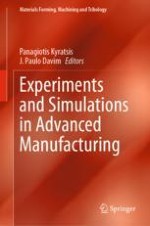2021 | OriginalPaper | Buchkapitel
Atomistic Modelling of Nanocutting Processes
verfasst von : Francisco Rodriguez-Hernandez, Michail Papanikolaou, Konstantinos Salonitis
Erschienen in: Experiments and Simulations in Advanced Manufacturing
Aktivieren Sie unsere intelligente Suche, um passende Fachinhalte oder Patente zu finden.
Wählen Sie Textabschnitte aus um mit Künstlicher Intelligenz passenden Patente zu finden. powered by
Markieren Sie Textabschnitte, um KI-gestützt weitere passende Inhalte zu finden. powered by
